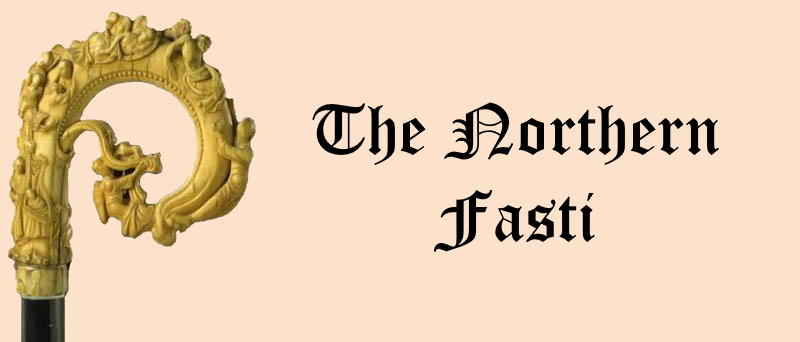Elgin Deanery
Moy
Parish Church: OS Ref: NGR NJ 016598 H.E.S. No: NJ05NW 29 Dedication: St Ninian?.
Associated Chapels: Kincorth (St Ninian) {NGR NJ 012616}
This parish is not to be confused with Moy which is beside the Loch of Moy in Stratdearn
It is suggested that the dedication of this church of Moy may have been to St Ninian.
The church of Moy has left only the slightest trace in the historical record, indeed, it may be asked why a church ever existed here at all! But if we take a little time to study a copy of the early editions of the Ordance Survey maps of the area, then we can gain a valuable insight. The church and its graveyard are clearly marked and are shown to lie on the natural route that would be taken, after having crossed the River Findhorn by the ferry which operated at the Broom of Moy salmon fishery
The remains of the church and its graveyard are still to be found a little to the south of Moy House. It is said that a number of gravestones remain but everything is much overgrown
The district which came to be called Moy - from Maigh, 'a plain', and formerly Mey - was comprised of two distinct estates, Easter Mey and Wester Mey. In 1798, when the Rev John Dunbar wrote the entry in the Old Statistical Account, both of these estates were held by the same proprietor. The church, which he called a prebendary church, stood in the village and lands of Easter Mey. This church of Moy was provided with a small glebe which is shown on the first OS maps centred at
Very early in the history of the Diocese of Moray, c.1222, a prebend was created using the teind scheaves {parsonage tithes} of Moy which, without the need to appropriate the whole of the parish church's revenues, provided a sufficiently large income to support one of the canons of Elgin Cathedral. In the majority of the prebends in Moray, the entire parish revenues were allocated to the prebendary, he then being responsible for providing a cleric, usually in minor orders, to serve the 'cure'. Although it is apparent that Bishop Bricius intended to create this prebend, it is not clear if this was achieved before his death in 1222, or whether the task was left to his successor.
In the period immediately after the Reformation, and perhaps for some years previously, the church of Moy was served by the same minister as served the churches of Forres and Dyke. Indeed, in 1618, Moy was united with Dyke parish.
| Name | OS Grid Ref. | Extent | Comment |
|---|---|---|---|
| Moy | NJ 016602 | ||
| Kincorth | NJ 012616 | ||
| Invererne | NJ 032605 | ||
| Grangehill | NJ 177697 | Was renamed Dalvey. | |
| Moy Carse | NJ 024606 | 43.6 acres | Easter Moy. |
| Upper Buchtalies | |||
| Nether Buchtalies |
The lands of Easter Moy
The lands of Grangehill
1238 (4 March) King Aleander II grants numerous properties in Scotland to Andrew, Bishop of Moray, including in the "Ballia de Fores {Forres}", the lands of Magna Kyncorth, Parva Kyncorth, Dyke et Brothyn {Dyke and Brodie}, Parva Kyntessoch, Mundol {Mundole}, Altyr {Altyre}, and Balnefery. The gift was made whilst the king was at Roxburgh. [Moray Reg., 40]
1540 (8 November) Ane obleiffment be Patrik Graunt of Dalwey (Grant of Dalvey), to be lele, trew and faithfull to the Bifcop of Murraye and his cheptoure, and to mantene and defend the famyn; and to serve the Bifchop in the Kingis weeris {wars} be him or his subtenentis of the faid landis; and to grant competent place and rowme for refaifing, keping and fauffing (saving) the teynd fchavis of the samyn. Testibus domino Johanne Bourt rectore de Moye, Johanne Grant de Ballindallach, et magiftro Willelmo Grant. [Moray Reg., 344]
1562 (22 & 28 April) Charter of feuferme from the Bishop, with the assent of his Chapter, in which he grants to Paul Dunbar son of the late Patrick Dunbar of Moy and Margaret Nicholson, his wife, the lands of the church of Moy, by Margaret Thomson mother of the said Paul himself, in the Sheriffdom of Elgin and Forres. Paying annually £1. 13s. 4d.
Given at Scone and Elgin, 22 and 28 April, 1562. [Moray Reg., 419]
Kincorth: There are references to a chapel, dedicated to St Ninian, lying close to the House of Kincorth. Jervaise wrote that, "There was a chapel dedicated to St Ninian, near Kincorth, where the name is still preserved in Ninian's Croft. The tenant of the farm, of which the croft forms a part, is bound to pay to the kirk session yearly the price of three old bolls of barley for behoof of the poor".5
1. OS Six-inch 1st edition, 1843-1882. Elgin, Sheet X, Surveyed: 1868-70, Published: 1872. https://maps.nls.uk/view/74426737 Return
2. OSA, Vol. 20, 193. Return
3. Shaw, L. (1882) The Province of Moray, enlarged and brought down to the Present Time by J.F.S. Gordon, Glasgow: Thomas D. Morrison, Vol. ii, 208. Return
4. Moray Reg., page 450. Return
5. Jervise, A. (1875-9) Epitaphs and Inscriptions from Burial Grounds and Old Buildings in the North-East of Scotland with Historical, Biographical, Genealogical and Antiquarian Notes, 2 vols., Edinburgh, II, 52. Return
e-mail: admin@cushnieent.com
© 2021 Cushnie Enterprises

